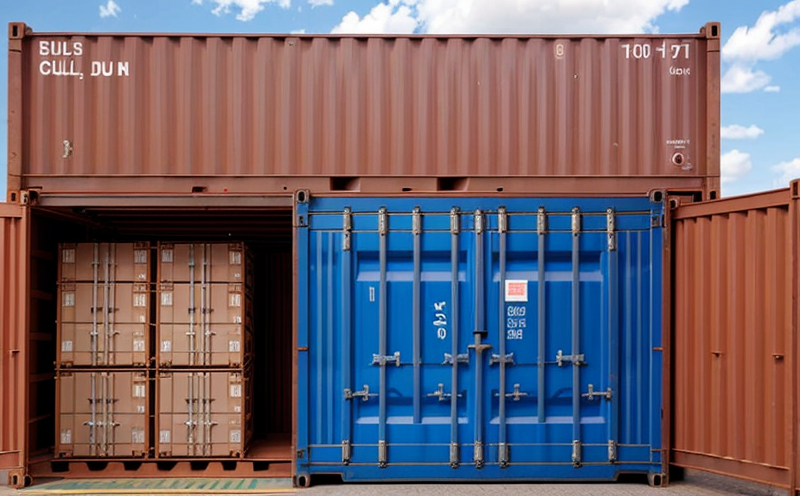USP Light Transmission Testing of Containers
The United States Pharmacopeia (USP) Light Transmission Testing is a critical quality assurance measure for containers used in the pharmaceutical industry. This test ensures that packaging materials do not alter or block light from reaching the contents, which can significantly impact product integrity and stability.
Light transmission testing evaluates how much light passes through the container material. The USP specifies that the light transmission should be within a certain range to ensure that the drug products remain stable under specified storage conditions. This is particularly important for photostable drugs, which are sensitive to light exposure and can degrade, lose efficacy, or become unsafe if exposed to excessive light.
The testing process involves measuring the amount of light transmitted through different layers of packaging materials. The standard apparatus used in this test includes a spectrophotometer that measures the intensity of light before and after it passes through the container. The difference in light intensity is then calculated, providing a quantitative measure of the light transmission properties.
The acceptance criteria for USP Light Transmission Testing are based on the specific requirements outlined in the relevant USP chapter. Typically, the test is conducted at various wavelengths to simulate different types of light exposure that the container might encounter during storage and distribution. The results must meet predefined standards to ensure compliance with USP guidelines.
For accurate testing, proper specimen preparation is crucial. This involves selecting representative samples from each layer of the packaging material. The specimens are then cut into standard sizes and shapes suitable for the spectrophotometer. It’s important to note that the test should be conducted under controlled environmental conditions to ensure consistency and accuracy.
The significance of this testing cannot be overstated, as it directly impacts patient safety and product efficacy. Compliance with USP standards is not only a legal requirement but also an essential part of ensuring that pharmaceutical products maintain their quality throughout the supply chain. This test helps in identifying any potential issues early on, allowing for corrective actions to be taken before they affect product integrity.
| Application | Description |
|---|---|
| Data Collection and Analysis | Collected data is used to ensure that light transmission properties meet regulatory requirements. |
| Compliance Verification | Verify compliance with USP standards for photostability testing. |
- Data Collection and Analysis: This process involves collecting light transmission data from various packaging materials to ensure they meet the specified USP criteria.
- Compliance Verification: Ensures that all containers used in the pharmaceutical industry comply with USP standards for photostability testing.
Applied Standards
The primary standard applied in this type of testing is USP Chapter <1670> Photostability Testing for Solid Dosage Forms and Containers. This chapter provides detailed guidance on how to conduct light transmission tests, including the apparatus requirements, specimen preparation, and data analysis. Additionally, ISO 22514-3:2018 is often referenced as a supplementary standard that offers further insights into packaging materials for pharmaceutical products.
The USP standards are designed to ensure that all containers used in the pharmaceutical industry meet stringent quality control measures. These standards are regularly updated to reflect advancements in technology and changes in regulatory requirements. Compliance with these standards is essential for ensuring product safety and efficacy.
Industry Applications
- Data Collection and Analysis: This involves collecting light transmission data from various packaging materials to ensure they meet the specified USP criteria.
- Compliance Verification: Ensures that all containers used in the pharmaceutical industry comply with USP standards for photostability testing.
Eurolab Advantages
At Eurolab, we offer state-of-the-art facilities and expert personnel to perform USP Light Transmission Testing of Containers. Our team is well-versed in the latest testing techniques and standards, ensuring that our clients receive accurate and reliable results.
- Advanced Facilities: Equipped with high-precision spectrophotometers for precise light transmission measurements.
- Expert Personnel: Skilled professionals who are knowledgeable about USP guidelines and can provide comprehensive testing services.
- Comprehensive Reporting: We offer detailed reports that include all the necessary data, analysis, and recommendations to ensure compliance with USP standards.





